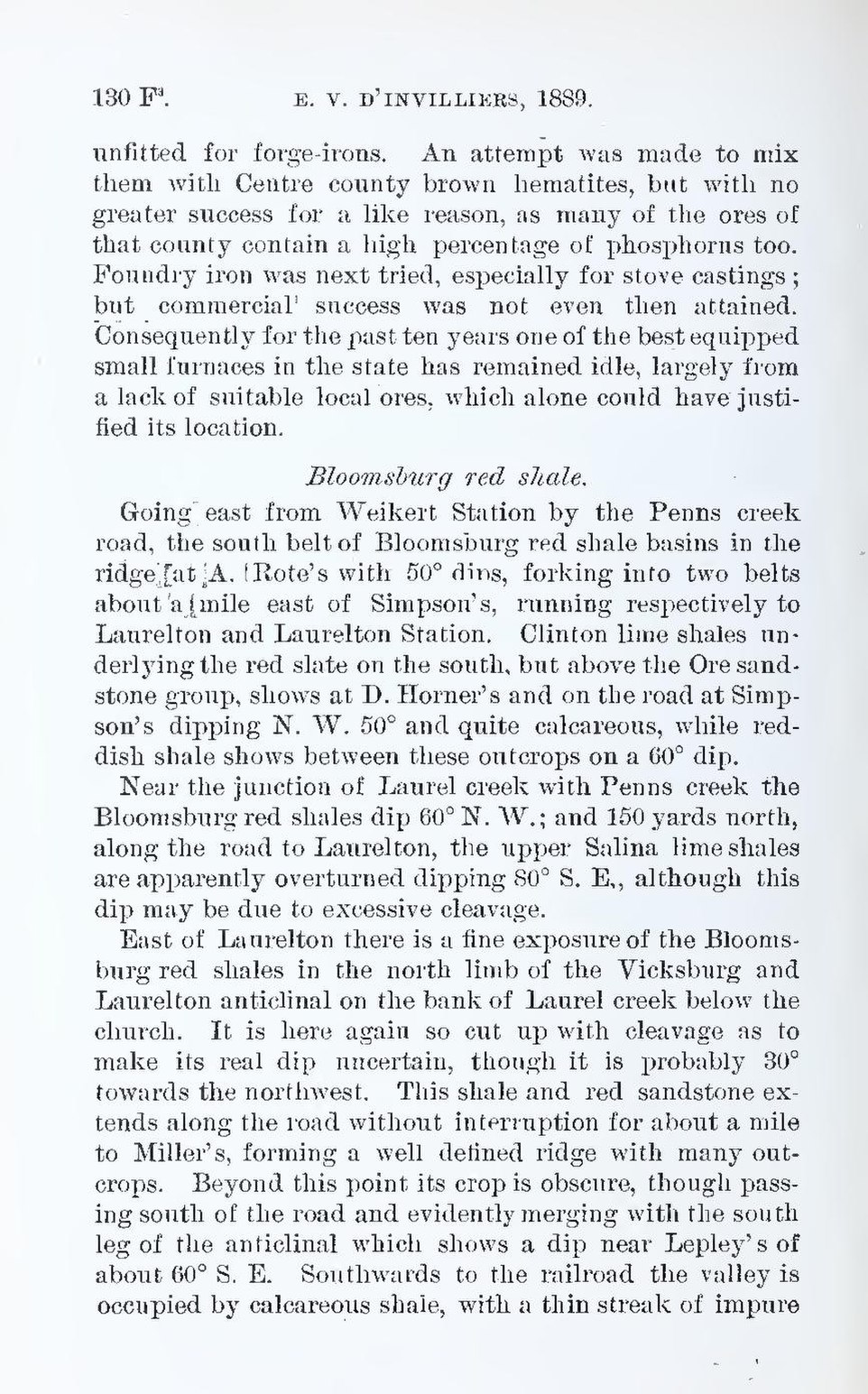unfitted for forge-irons. An attempt was made to mix them with Centre county brown hematites, but with no greater success for a like reason, as many of the ores of that county contain a high percentage of phosphorus too. Foundry iron was next tried, especially for stove castings; but commercial success was not even then attained. Consequently for the past ten years one of the best equipped small furnaces in the state has remained idle, largely from a lack of suitable local ores, which alone could have justified its location.
Bloomsburg red shale.
Going east from Weikert Station by the Penns creek road, the south belt of Bloomsburg red shale basins in the ridge at A. Rote’s with 50° dips, forking into two belts about a mile east of Simpson’s, running respectively to Laurelton and Laurelton Station. Clinton lime shales underlying the red slate on the south, but above the Ore sandstone group, shows at D. Horner’s and on the road at Simpson’s dipping N. W. 50° and quite calcareous, while reddish shale shows between these outcrops on a 60° dip.
Near the junction of Laurel creek with Penns creek the Bloomsburg red shales dip 60° N. W.; and 150 yards north, along the road to Laurelton, the upper Salina lime shales are apparently overturned dipping 80° S. E,, although this dip may be due to excessive cleavage.
East of Laurelton there is a fine exposure of the Bloomsburg red shales in the north limb of the Vicksburg and Laurelton anticlinal on the bank of Laurel creek below the church. It is here again so cut up with cleavage as to make its real dip uncertain, though it is probably 30° towards the northwest. This shale and red sandstone extends along the road without interruption for about a mile to Miller’s, forming a well defined ridge with many outcrops. Beyond this point its crop is obscure, though passing south of the road and evidently merging with the south leg of the anticlinal which shows a dip near Lepley’s of about 60° S. E. Southwards to the railroad the valley is occupied by calcareous shale, with a thin streak of impure
